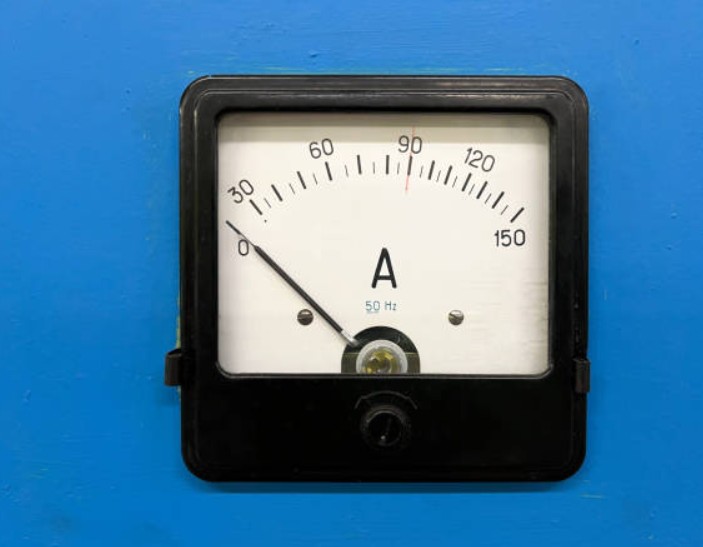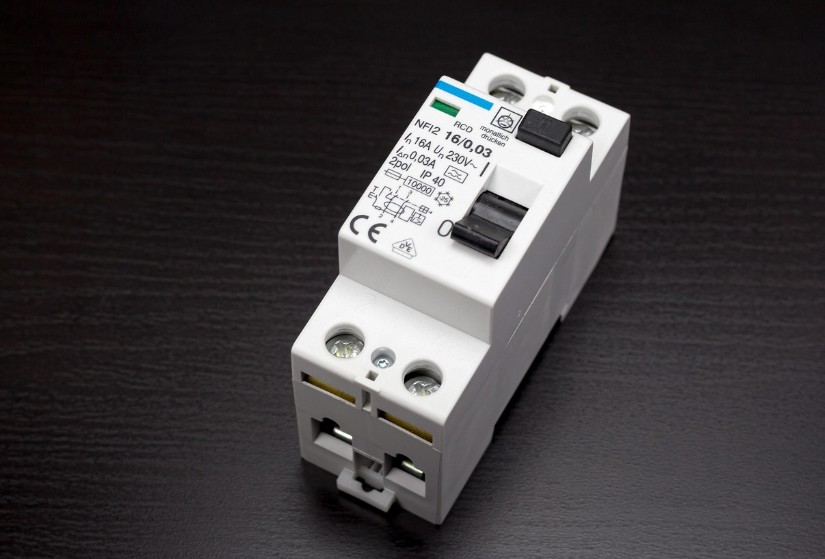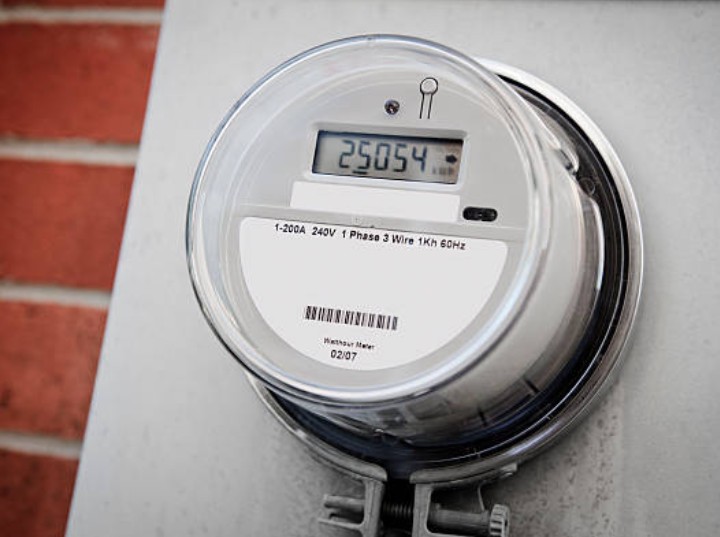Electricity is all around us—from switching on the kettle for a morning brew to powering our electric cars. But how many of us actually stop to understand how it works? More importantly, how many of us know what the numbers on our electrical devices truly mean?
Today we’re answering a question that seems simple but carries real-life importance:
What current will an ammeter register if 960C of charge flow through it in 2 minutes?
This isn’t just for students or electricians. It’s for homeowners, DIY enthusiasts, drivers of electric vehicles, and anyone in the UK who wants to stay safe and make smart electrical choices.
Let’s break it down step by step with real-life examples, stories, and practical UK scenarios.
Why Do Real People in the UK Need to Understand Electric Current?
You might think calculating electric current is only for professionals, but understanding current impacts us all—and sometimes in surprising ways.
Real-Life DIY Story: James from Leeds
James, a passionate DIYer from Leeds, wanted to build his own garden workshop. He installed sockets, fitted lights, and proudly set up his tools. He even connected an ammeter to keep track of his power use.
But James miscalculated the current flowing through his setup, thinking his tools used less energy than they actually did. Within days, he kept tripping his circuit breaker and couldn’t figure out why.
Eventually, an electrician showed him that his total current load exceeded the circuit’s capacity. Had he calculated the current correctly from the start, he would have saved time, money, and a good deal of frustration.
Why It Matters for Everyday Brits
- Safety: Knowing how much current flows in your circuits helps prevent fires, blown fuses, and damaged appliances.
- Cost Savings: Understanding current can help you avoid overloading circuits and prevent expensive repairs.
- Confidence: Whether you’re fitting a new socket or installing an EV charger, understanding current gives you the confidence to ask the right questions and make informed decisions.
These are not isolated stories—they’re happening in homes all across the UK as we increasingly take on home improvements and move towards electrification.
What Is Electric Current and Why Should I Care?
What Is Electric Current?

Electric current is the flow of electric charge through a conductor, typically a wire. It’s measured in amperes (A)—or “amps” in everyday language.
Think of electricity like water in a pipe:
- The water flow rate is the current.
- The amount of water that passes a point is like the electric charge.
If more charge flows past a point per second, the current is higher.
Units You Should Know:
- Current (I): Measured in amperes (A)
- Charge (Q): Measured in coulombs (C)
- Time (t): Measured in seconds (s)
Why Should UK Homeowners Care?
Here in the UK, our plug sockets are rated for specific currents, usually protected by fuses of 3A, 5A, or 13A. If your appliance draws more current than the fuse can handle, the fuse blows to protect you and the circuit.
If you’re using extension leads with multiple high-current appliances—like a kettle, microwave, and toaster at the same time—you could unknowingly exceed safe current limits, especially in older UK homes with less robust wiring.
The Bigger Picture
- Older Properties: Many UK homes still have 30+ year old wiring that wasn’t designed for modern electric loads.
- EV Charging: Electric vehicles demand higher currents, and incorrect assumptions can lead to overloaded systems.
- Growing DIY Culture: Brits are embracing DIY like never before, but few properly understand electrical limits.
Knowing how to calculate current can prevent these issues before they happen.
How Do You Calculate Current?
Understanding electric current starts with one key formula:
Current (I) = Charge (Q) ÷ Time (t)
Let’s Break It Down:
- Current (I): The flow of electric charge per second (measured in amperes, A)
- Charge (Q): The total amount of electric charge that has moved (measured in coulombs, C)
- Time (t): The period over which the charge has moved (measured in seconds, s)
Why Is This Formula So Important?
This isn’t just a school equation—it’s used across the UK in:
- Home electrical installations
- Appliance design
- EV charging setups
- GCSE and A-Level physics exams
- Health and safety checks
If you’re adding new sockets, fitting a garden workshop, or installing high-powered equipment, this formula helps you make sure the total current is within safe limits.
Everyday Example:
If you have three appliances drawing 4A, 3A, and 2A plugged into the same socket:
- Total current = 4A + 3A + 2A = 9A
If your plug has a 13A fuse, you’re safe—but you’re getting close to the limit. Add another high-current device, and you could blow the fuse.
What Current Will an Ammeter Register If 960c of Charge Flow Through It in 2 Minutes?

Let’s focus on our key search question:
What current will an ammeter register if 960 coulombs of charge flow through it in 2 minutes?
- The Formula: Current (I) = Charge (Q) ÷ Time (t)
- The Calculation: I = 960 ÷ 120 = 8 amperes
- The Answer: The ammeter will register 8 amperes.
But why is this so valuable?
Because this knowledge helps you:
- Safely install new appliances
- Confidently handle DIY projects
- Understand fuse ratings in UK plugs
- Avoid overloading circuits in your home
Whether you’re in Manchester, London, Glasgow, or anywhere in the UK, this basic calculation empowers you to make better electrical decisions.
Why Is This Calculation Important in UK Homes?
The UK is experiencing rapid changes in home electrification. This calculation isn’t just theoretical—it has direct, practical consequences for homes, families, and businesses.
1. Older UK Wiring Can Be Overloaded Easily
Many UK homes, especially Victorian terraces and 20th-century builds, have wiring that was never designed for the electric loads we use today. Without understanding current limits, homeowners can unknowingly exceed safe limits.
2. The Rise of Electric Vehicles
More UK families are installing home EV chargers. A fast charger can draw over 32 amperes, far more than many people realise. If your home’s circuits can’t handle that, you risk overheating and circuit failure.
3. DIY Electrics Are Increasing
More people are:
- Building summerhouses
- Setting up garden offices
- Running home businesses with power tools
Without understanding current, many Brits accidentally overload circuits when adding extra sockets or appliances.
4. The Growing Importance of Energy Awareness
With rising energy bills, it’s more important than ever to know which appliances draw the most current. Monitoring current helps you control energy use and avoid unnecessary expenses.
How Can You Safely Monitor Current at Home in the UK?
There are simple, affordable tools and safety habits you can adopt to keep your home safe.
1. Use Plug-In Ammeters
Plug-in ammeters are available at Screwfix, B&Q, and Amazon. They show the real-time current your appliances are drawing. Great for spotting energy-hungry devices.
2. Understand UK Fuse Ratings
Most UK plugs have fuses rated at 3A, 5A, or 13A.
- Small devices (phone chargers) usually need 3A.
- Larger appliances (microwaves, kettles) need 13A.
Choosing the wrong fuse can either:
- Causes the fuse to blow unnecessarily.
- Fails to protect you if the current exceeds safe limits.
3. Avoid Overloading Extension Leads
The UK Fire Service warns against plugging too many high-powered appliances into a single extension lead. Stick to one major appliance per socket.
4. Check Your Circuit Breakers

If your lights flicker or your breaker trips often, it’s a sign your circuit is overloaded. Get it checked by a qualified electrician.
Fun UK Fact: How Much Current Does the Eurostar Use?
Here’s a mind-blowing comparison.
When the Eurostar high-speed train accelerates through the Channel Tunnel, it can draw over 12,000 amperes of current. That’s 1,500 times more than the current in our example.
Yet, the calculation used to determine this massive current is exactly the same as the one we just solved.
It’s a perfect example of how these principles scale from a simple home socket to some of the largest machines in the world.
Final Thoughts:
This isn’t just about solving a maths problem—it’s about what the answer means in real life.
Across the UK, from London flats to rural cottages in Yorkshire, we use electricity every day without thinking much about the details. But whether you’re setting up a garden workshop, charging your electric car, or simply plugging in your favourite kettle, understanding current is key to keeping your home safe and your electrics running smoothly.
When you know how to calculate current, you can:
- Avoid overloading your circuits
- Choose the correct fuses for your appliances
- Ask the right questions when dealing with electricians
- Take on DIY projects with more confidence and fewer risks
In a time when more Brits are embracing DIY culture, smart homes, and electric vehicles, this knowledge has never been more useful.






